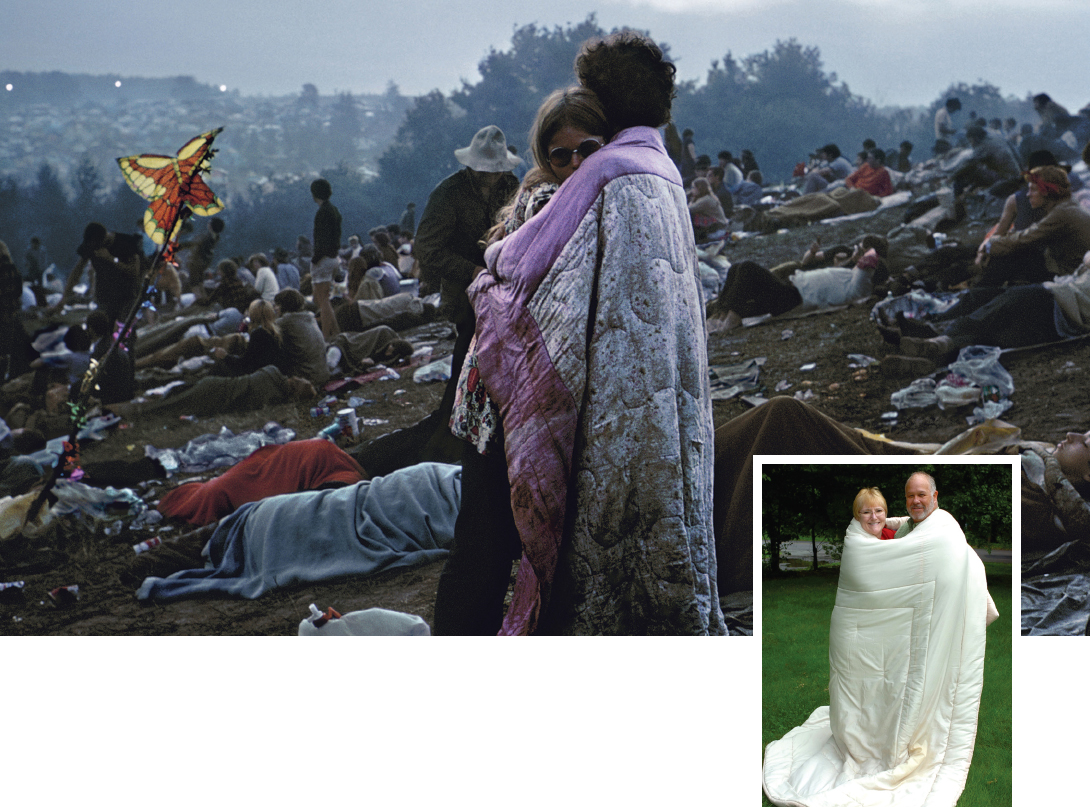Comparing and Contrasting

Responding to an Image
The large photograph of the young couple was taken at Woodstock in August 1969 and then featured on the cover for the album and the poster for the movie that recorded the event. The smaller insert, taken before the event’s fortieth anniversary, shows the same couple, Nick and Bobbi Ercoline, now married for decades. Examine the two photographs carefully, noting similarities and differences. What does each image convey about its era? What does each convey about the couple, whether age twenty or sixty? What qualities made the original image iconic? What similar or different qualities are captured in the more recent image?
Which city — Dallas or Atlanta — has more advantages or drawbacks for a young single person thinking of settling down to a career? Which of two ads for the same toy appeals more effectively to parents who want to get durability as well as educational value for their money? As singers and songwriters, how are Beyoncé Knowles and Taylor Swift similar and dissimilar? Such questions invite answers that set two subjects side by side.
When you compare, you point out similarities; when you contrast, you discuss differences. When you write about two complicated subjects, usually you need to do both. Considering Mozart and Bach, you might find that each has traits the other has — or lacks. Instead of concluding that one is great and the other inferior, you might conclude that they’re two distinct composers, each with an individual style. On the other hand, if your main purpose is to judge between two subjects (such as moving either to Dallas or to Atlanta), you would look especially for positive and negative features, weigh the attractions and faults of each city, and then stick your neck out and make your choice.
Why Comparing and Contrasting Matter
In a College Course
- You compare and contrast to “evaluate” the relative merits of Norman Rockwell and N. C. Wyeth in an art history course or the relative accuracy of two Civil War Web sites for a history course.
- You compare and contrast to “describe” a little-known subject, such as medieval funeral customs, by setting it next to a similar yet familiar subject, such as modern funeral traditions.
In the Workplace
- You compare and contrast your company’s products or services with those of competitors, just as your experience, education, and personal attributes were compared and contrasted with those of others before you were hired.
In Your Community
- You compare and contrast your options in choosing a financial aid package, cell phone contract, childcare provider, bike helmet, or new mayor.
 What are some instances when you compare or contrast products, services, opportunities, options, solutions, or other things? When might you use comparison, contrast, or both in your writing? What would you expect them to contribute?
What are some instances when you compare or contrast products, services, opportunities, options, solutions, or other things? When might you use comparison, contrast, or both in your writing? What would you expect them to contribute?